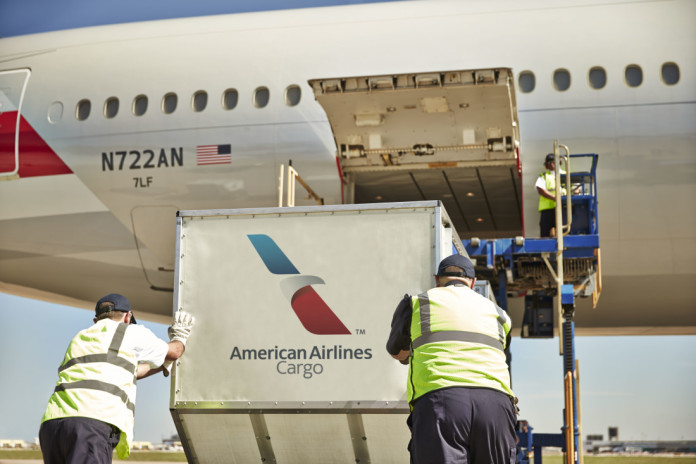

American Airlines Cargo (AAC) turned diverse weather and currency fluctuations over the course of 2015 – which posed significant challenges for the perishables business – into an opportunity to focus on the strong Latin America (LATAM) market.
“Perishable movement within the USA, specifically domestic demand, was stronger for 2015 than we’ve seen in recent years,” says the carrier’s managing director for cargo sales West, Joe Goode. “Our most commonly transported perishable commodities last year were blueberries, asparagus and fresh flowers.”
Goode tells Air Cargo Week (ACW) that customers are optimistic for 2016 and AAC intends to ensure its perishables business continues growing. “For this year, we already have plans to invest in a variety of cooler facilities at some of our hubs,” he says.
“We think the year-over-year impact of our second Los Angeles to London Heathrow route will generate significant tonnage. It makes use of our most cargo-friendly aircraft, the Boeing 777-300, and not only allows for business terminating in London but for trucking business into mainland Europe and for interline air transfers to the Middle East, which is a growth market for us.”
AAC has added a service between Los Angeles and Sydney (Australia), a daily route which also uses a 777-300 and expands the network to the South Pacific, allowing connections to over 215 other locations in LATAM.
“Although this is a new opportunity for us and we’re still working to understand the logistics on both ends, as headwinds subside and payloads increase, we should see a strong seasonal perishable demand in everything from chilled meat to fruits and vegetables,” says Goode.
“We are also seeing strong advance bookings for seasonable perishables, including a lot of fresh fish, for the new service between Los Angeles and Haneda, Tokyo, which started 11 February.”
Goode says the vagaries of the weather will always be a factor for perishables and is “something we have to work around” but a key challenge is to understand the needs and abilities of foreign markets.:“What perishable commodities are in demand and how can we offer the highest quality product and service, even when there’s an opportunity for regions to source elsewhere?
“This is an evolving market and top markets like Europe and Asia who have a high demand for high-quality commodities out of the US.”
Goode anticipates perishables will outpace hard freight growth over the next couple years. “There is tremendous global growth potential, particularly into Asia,” he says. “Currently, from the West Coast, the most commonly exported commodity to Asian regions is fresh fish which requires closely monitored temperature control throughout the whole shipping process.
“As the emerging middle class in China is exposed to products at more reasonable prices, there will be a strong demand. These types of sensitive shipments are what require the most handling and attention as the market continues to grow and evolve.”













